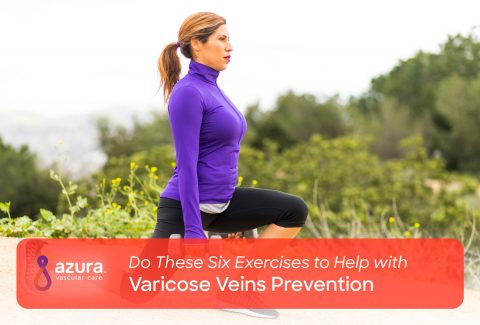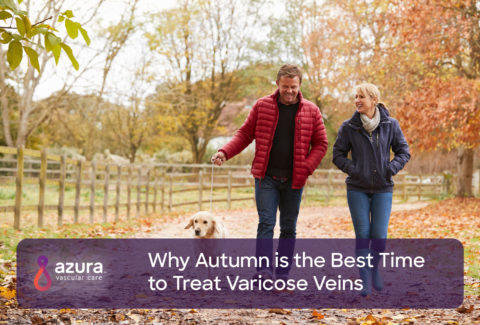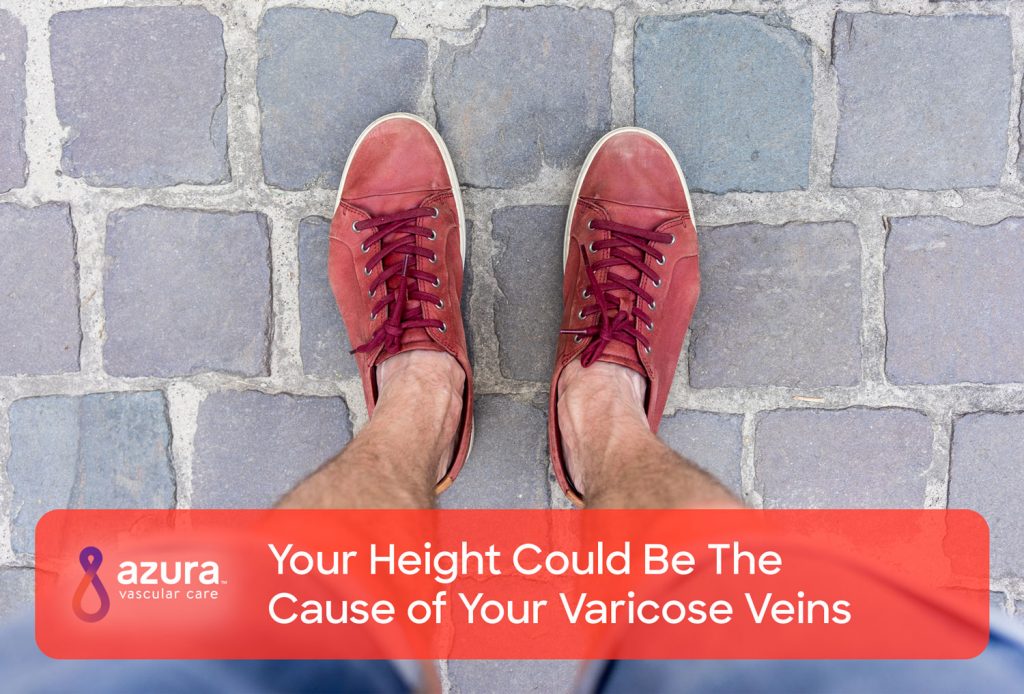
Being Tall May Me a Risk Factor for Varicose Veins
A Stanford University School of Medicine study proves that being tall is a considerable risk factor for varicose veins. (i) The findings showed a strong genetic link between height and varicose veins and suggested that the genes that determine height are likely to cause varicose veins. (i)
The Stanford researchers used data from a genetic repository of more than 500,000 people to identify genetic regions associated with varicose veins and an artificial intelligence machine model was used to locate any other unknown risk factors. In addition to what are known risk factors for varicose veins—age, family history, gender, weight—the artificial machine model revealed a connection between height and varicose veins. Researchers used Mendelian randomization, a statistical technique, to confirm that height was an actual cause.
What Causes Varicose Veins?
Varicose veins are caused by dysfunctional valves in the veins and weakened vein walls. If the valves in the veins do not work efficiently, normal venous blood flow is impacted and the veins may enlarge due to blood pooling in the veins instead of traveling towards the heart.
Although any vein can become varicose, the veins that are most affected are the ones in your legs and feet. The reason for this is due to the increased pressure of blood in the veins when standing or walking.
“Although you cannot control your height, there are risk factors that you can control. Make sure you are active, watch your weight and avoid wearing high heels.”
Varicose Vein Symptoms
Varicose veins may not cause pain. For many, they are a cosmetic concern, but for some, they can cause pain and discomfort.
- Swollen, bluish-purple, twisty veins appearing just under the surface of the skin
- Pain and discomfort that becomes worse at night or when standing
- Discoloration in the skin
- Swelling, cramping, burning or itching
- Fatigue or heaviness in the legs
At-Home Preventive Measures to Alleviate the Discomfort Caused by Varicose Veins
A few self-care measures you can take on at home can help ease the discomfort caused by varicose veins or even prevent them from getting worse.
- Change your sitting or standing positions regularly
- Elevate your legs
- Wear compression stockings
- Avoid wearing high heels
- Watch your weight
- Exercise
If You Experience Symptoms, Seek Treatment Before They Get Worse
Varicose veins is a common vein disorder in the legs, but if left untreated, they can lead to more serious conditions, including ulcers, chronic venous insufficiency, where blood can collect and pool in the veins, or deep vein thrombosis (DVT), where a blood clot can form in one or more of the deep veins. DVT is the most serious complication and needs to be treated right away to avoid clots breaking loose and traveling through the bloodstream to the heart or lungs, causing a heart attack or pulmonary embolism.
See your doctor immediately if you develop complications of varicose veins.
Treatment for Varicose Veins
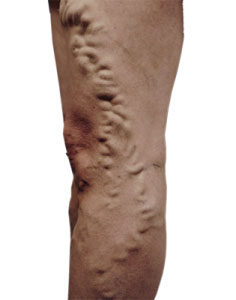
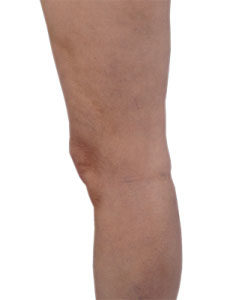
Varicose veins treatment options can range from lifestyle changes to minimally invasive procedures to surgery.
- Lifestyle changes – Your doctor may recommend becoming more active, losing weight or wearing compression stockings as self-management treatment options for your varicose veins.
- Surgery – Prior to minimally invasive treatment options, surgery was the only option for treating varicose veins. With surgery, an incision is made to find the varicose veins for ligation (tying off the veins) or if the varicose veins are close to the surface, they can be removed. Surgery can result in complications and an extended recovery period. It’s important to note that there is a 50 percent chance of the varicose veins coming back within five years of the surgery. (ii)
- Minimally invasive procedures for varicose veins – Due to the risk of pain and complications that may occur from surgery, less intrusive varicose vein techniques were developed. Sclerotherapy, endovenous ablation and microphlebectomy are minimally invasive treatment options for varicose veins. They can be performed in an outpatient setting with minimal discomfort and downtime.
Don’t Trust Your Varicose Veins Treatment to Just Any Provider
Today you not only have a choice in how you want to treat your varicose veins, but you also have a choice in providers. Vein conditions and their treatments can often be more complex than they appear.
“Treatment for varicose veins is not an emergency procedure unless you’re suffering from DVT,” remarked Dr. Sor. “If your vein situation is not urgent, take the time to find the best varicose vein specialist in your area. Choosing the wrong doctor, not a vascular specialist, could, unfortunately, result in suffering through multiple ineffective, costly treatments.”
Trust your varicose veins treatment to a vascular specialist, a vascular surgeon or an interventional radiologist, who can determine the best option for your individual case.
For more information, download An Introduction to Varicose Veins or call 844-832-VEIN (8346) today to set up a consultation with a vascular specialist.
Sources:
(i) Are you tall? Better watch out for varicose veins, Sandee LaMotte, CNN, https://www.cnn.com/2018/09/24/health/varicose-veins-tall-people-study/index.html
(ii) Piazza, G., Varicose Veins. Circulation, 2014. 130: p. 582-587. https://www.ahajournals.org/doi/10.1161/CIRCULATIONAHA.113.
